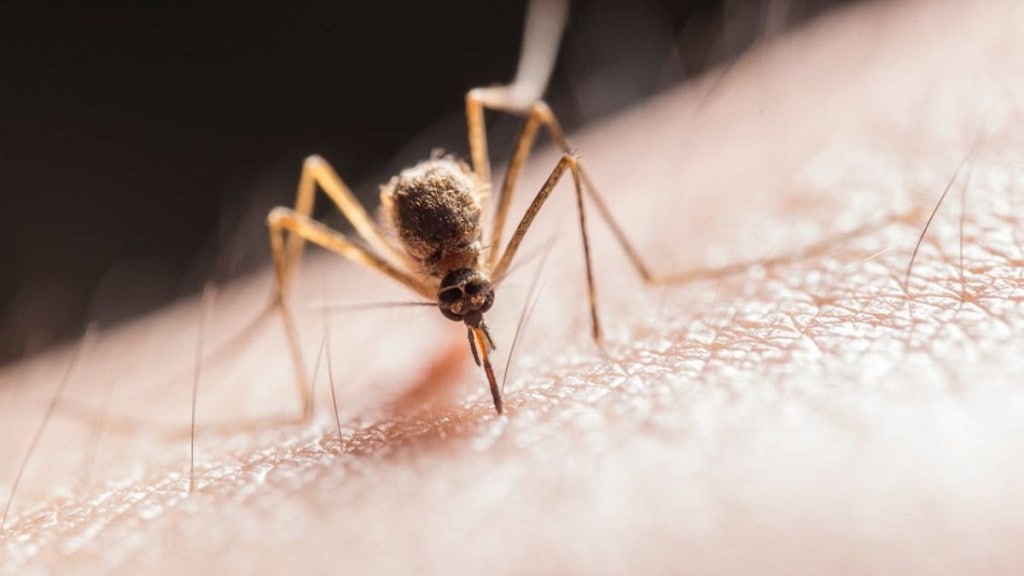Mosquito-borne illnesses like malaria and chikungunya are increasing in many major cities in India due to heavy rainfall. The Municipal Corporation of Delhi (MCD) has reported a rise in mosquito-borne diseases this year. As of mid-September 2025, Delhi has recorded 297 malaria cases, compared to 271 cases during the same time last year. Chikungunya cases in Delhi have gone up to 46 this year, compared to 33 last year. To stop the spread, the MCD is fogging and spraying larvicide in different areas.
Mumbai, however, is seeing even more cases than Delhi. Between January and September 2025, the Brihanmumbai Municipal Corporation (BMC) reported 6,277 malaria cases and 542 chikungunya cases. Officials say early monsoon rains and poor drainage systems have created ideal breeding grounds for mosquitoes, contributing to the rise.
With the continuous increase in cases, it’s important to know the difference between symptoms of malaria and chikungunya to get proper treatment. The Financial Express got in touch with doctors to know the warning signs, why you should not self medicate and which is more deadly.
What is Malaria?
Malaria is caused by a parasite called Plasmodium, which is spread through the bite of infected Anopheles mosquitoes. The disease often develops a week or more after the bite. Common symptoms include cyclical fever, chills, sweating, headaches, fatigue, nausea, and sometimes vomiting. One key sign of malaria is that the fever comes in cycles – it rises, falls, and then rises again.
Dr. Suranjit Chatterjee, Senior Consultant in Internal Medicine at Indraprastha Apollo Hospitals, explains, “Malaria can become very serious if not treated early. It can cause anaemia, organ complications, and even cerebral malaria, which can be life-threatening.”
Treatment involves specific antimalarial medications, and early treatment is critical. There is also a malaria vaccine available in some parts of Africa for children, though it is not yet widely used globally and not available in India.
What is Chikungunya?
Chikungunya is caused by a virus transmitted by Aedes mosquitoes. Its symptoms usually appear suddenly within 4–7 days of being bitten. These include high fever, severe joint pain, headaches, rash, and fatigue. Unlike malaria, the fever in chikungunya does not come in cycles, but joint pain can last for weeks or months, making movement difficult.
“Chikungunya is rarely fatal, but it can leave people with lingering joint pain that affects daily life,” says Dr. Chatterjee. There is no specific antiviral treatment for chikungunya. The treatment mainly focuses on rest, hydration, paracetamol for fever and pain, and anti-inflammatory medicines for joint pain. Vaccines for chikungunya are becoming available in some regions but are not yet routine.
How does Malaria and Chikungunya spread?
Malaria and chikungunya are spread by different mosquitoes. Malaria is transmitted by Anopheles mosquitoes, which usually bite at night, while chikungunya is spread by Aedes mosquitoes that bite during the day. Both mosquitoes breed in stagnant water, which is why proper sanitation and mosquito control are very important.
Why you should not self medicate?
Many people start taking medicines at home as soon as they feel feverish or tired. While it may seem like a quick fix, Dr. Tushar Tayal, Associate Director of Internal Medicine at CK Birla Hospital, Gurugram, warns that self-medicating can be dangerous. “Self-medicating can be dangerous because it hides symptoms and delays proper diagnosis. Fever or joint pain could be malaria, dengue, or chikungunya, and using the wrong medicine can make things worse,” he said.
For malaria, the parasite keeps multiplying even if fever temporarily goes down. By self medicating, you delay proper treatment and increase the risk of serious complications such as anaemia, liver or kidney damage, and even death in the worst cases.
Meanwhile, in chikungunya, taking strong painkillers or steroids without medical advice can worsen joint pain. And in dengue, medicines like ibuprofen can cause bleeding and other life-threatening complications.
Self-medicating can also stop people from getting tested early. By the time they finally go to a hospital, the illness may have gotten worse, needing stronger or longer treatment. Using antibiotics without a doctor’s advice is risky too, because it can make germs stronger and harder to treat in the future.
Prevention is better than cure
Prevention is the best way to avoid malaria and chikungunya. “Some simple steps can really help,” says Dr. Chatterjee. He suggests applying mosquito repellent to all exposed areas of the skin, sleeping under mosquito nets at night, and wearing full-sleeved shirts and long pants to avoid mosquito bites.
It’s also important to remove standing water around homes, like in buckets, flower pots, and drains, because mosquitoes breed there. Strengthening your immunity helps too. “Eating a balanced diet with plenty of fruits, vegetables, and protein, drinking enough water, getting proper sleep, and exercising regularly all help your body fight infections better,” Dr. Chatterjee explains. Following these simple tips can greatly reduce the risk of getting these mosquito-borne diseases.
When to see a doctor?
All three experts had the same opinion that one should not ignore early warning signs. Fever, fatigue, headache, or joint pain should not be ignored. Laboratory tests should be done to confirm if it’s malaria or chikungunya, to get proper treatment and prevent complications. Self-medicating or delaying hospital visits can make recovery longer and more difficult.
With rains creating ideal conditions for mosquitoes to breed, many cities are seeing an increase in malaria and chikungunya cases.

